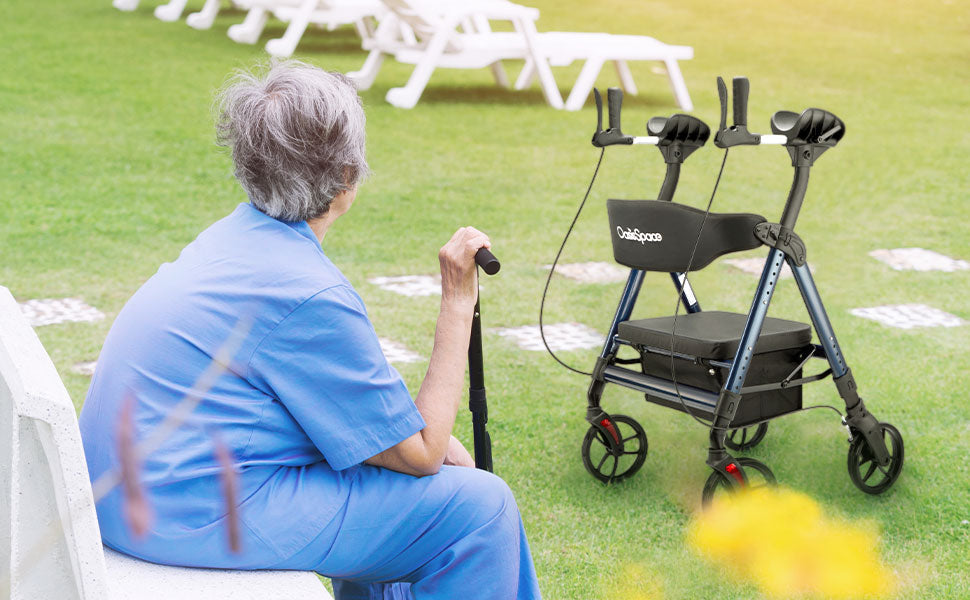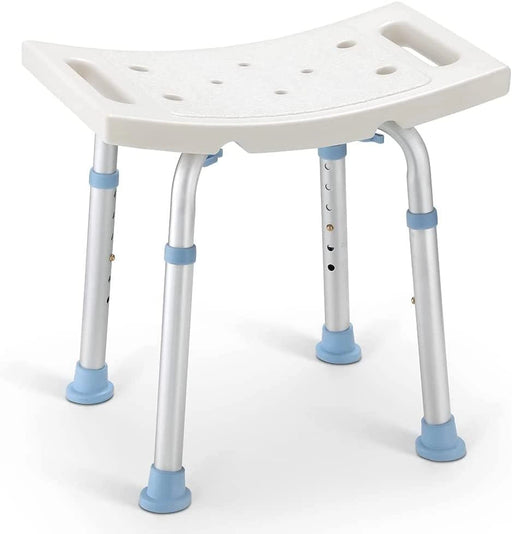
How to Use a Rolling Walker Properly
Rolling walkers have become increasingly popular among seniors who need assistance with mobility. These walkers provide balance and stability, making it easier for seniors to move around independently.
It is fair to say that the benefits of using a rolling walker are numerous, including reduced risk of falls, improved posture, increased confidence, and the ability to participate in activities that were previously difficult or impossible.
However, it is critical that rolling walkers are used properly to ensure safety, effectiveness, comfort, and quality of life. Using a rolling walker incorrectly can lead to injuries, instability, strain, and accidents that threaten independence and mobility.
This article aims to provide guidelines for the safe and efficient use of rolling walkers.
Pick a Rolling Walker Properly
Before selecting a rolling walker, it's essential to understand the different types and their unique characteristics.
Two-wheeled rolling walker
Two-wheeled rolling walkers, also known as walkers or walking sticks with wheels, have a compact and lightweight design providing enough stability for light walking but not high activity levels.
They fold or adjust to different sizes and can easily be taken apart for storage and transportation in a vehicle trunk or as checked baggage when traveling.
Three-wheel walkers
Three-wheel walkers are excelling in maneuverability and agility, making them ideal for navigating tight spaces. These devices can work well for short distances on relatively even indoor/outdoor surfaces and handle rougher terrain than two-wheel models.
Four-wheel walkers
Four-wheel walkers are known for their stability and support, making them an excellent choice for those who need extra assistance with balance.
Four-wheel walkers have a wider base and four wheels, providing greater reliance when walking. These models provide extremely smooth, easy, and controlled rolling and suit those with limited mobility, weakness, injury, or disability.
When choosing between different types, it's important to consider your specific needs and preferences. Besides, it's essential to use a rolling walker properly to avoid accidents and injuries. The next section will discuss some common mistakes people make when using a rolling walker and how to avoid them.
Use a Rolling Walker Properly
The following section will discuss some common mistakes people make when using a rolling walker and how to avoid them.
1. Adjust the Height
The walker height should be adjusted to the ideal level for the most comfortable and safe use. For most people, the normal height of a rolling walker is around waist level. If the height is too low, it will cause back strain and discomfort. If it is too high, it can make the walker unstable and increase the risk of falls.
To adjust the height of rolling walkers, you should first loosen the threaded locking bolts or knobs on the vertical adjustment posts using a wrench or pliers. These posts connect the handle grips to the base frame.
Then, you may raise or lower the handle grips to the recommended waist-high height for the user. As a general guide, the handles should be at or slightly below the wearer's navel. And you should double-check that the walker is level for safety before use.
2. Use the Handgrips
For the utmost safety and stability, you should always maintain a firm grip on the handgrips when using a rolling walker. A steady, balanced grip provides support and control, enabling confident walking or standing. Leaning on an ungrasped walker is dangerous, as it can easily slide out from under you, causing a loss of balance and potentially leading to a fall.
While using the rolling walker, grip the handgrips tightly enough that the walker does not drift or pivot, but not so hard that your hands become numb. Find the "sweet spot" of support through practice. Multiple hand positions may also be required, grasping at different heights or widths along the handgrips based on the task.
3. Move Slowly
For the most stable walking experience with a rolling walker, you’d better proceed slowly and deliberately with each step. Rushing or taking long, hurried steps can easily destabilize the walker, causing it to wobble precariously or even tip completely. Safety is the priority—never sacrifice stability for speed. Move at your own pace, focusing on control and balance with each footstep.
4. Do Not Overreach
When using a rolling walker, you may exercise caution regarding reaching and leaning for maximum stability and safety. Reaching too far forward, backward, or side to side can cause the walker to tip over, leading to a dangerous loss of balance or fall. The walker provides stability as long as your center of gravity remains over the base wheels, therefore you should only extend your reach within the base frame of the walker.
5. Lock Before Sitting
When using a rolling walker, it is critical to lock the wheels before transitioning to a seated position. Unlocked wheels will allow the walker to roll freely, and sitting introduces additional weight that can cause the walker to slide out from under you if the wheels are not locked in place.
Ensure both wheels (all wheels if a 4-wheeled walker) are locked before sitting. Check that the wheels do not roll at all with weight on the locks.
6. Sit Slowly
When transitioning from standing to a seated position while using a rolling walker, do so with the utmost caution and control. Sudden movements, excessive speed, or plopping down with force onto the seat can cause the walker to tip over backward, resulting in injury.
Slowly lower your weight onto the seat with care, rather than plopping down suddenly. Always maintain free-hand support as a counterbalance and apply weight little by little until full weight is on the seat.
In summary, rolling walkers provide invaluable support and independence for active seniors and those with limited mobility. When used properly with caution and care, rolling walkers can empower individuals to maintain physical activity and participation in exercises while reducing health risks.
Recommend Products
-
 Sale
Sale
Standard - 300LBS Capacity Shower Stool
Original price $51.99From Original price $29.99Original price $51.99Current price $29.99From $29.99Current price $29.99OasisSpace Medical Square Shower Stool for Bathtub OasisSpace Square Shower Stool for Bathtub is approved as the highest standard(FDA) for medical...
View full detailsSaleOriginal price $51.99From Original price $29.99Original price $51.99Current price $29.99From $29.99Current price $29.99


